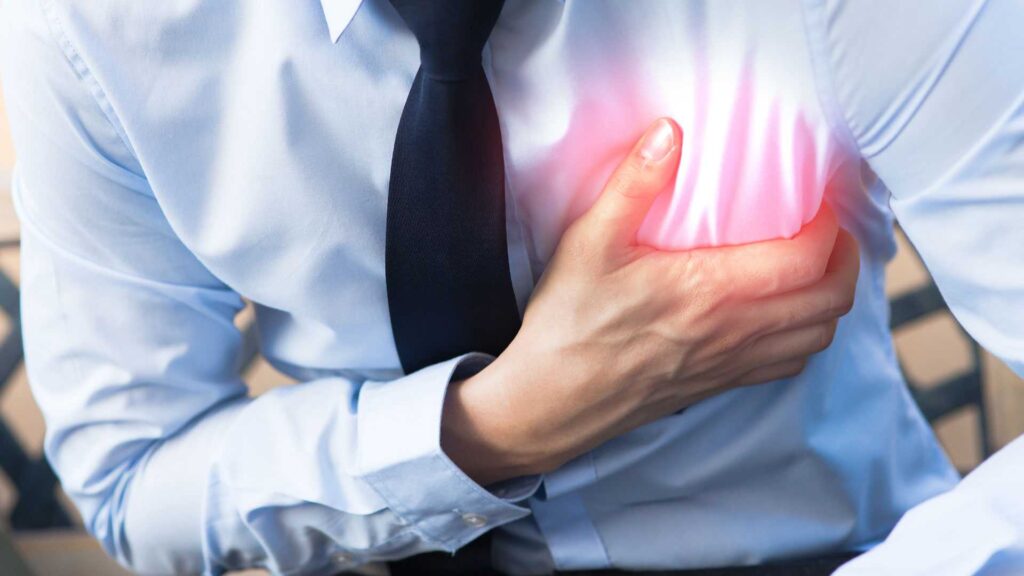Heart Attack
Heart Attack 101: An Overview of Myocardial Ischemia
Myocardial infarction (MI), the medical term , is a potentially fatal condition. It happens when blood supply to a portion of the heart muscle is suddenly blocked. Because of this obstruction, the heart tissue is deprived of oxygen and nutrients, which can lead to injury or even death. This blog post gives you information on including their origins, symptoms, and available treatments, so you can prioritise your heart health and respond appropriately.
Table of Contents

The Man Behind the Curtain: Heart Attack Causes
Coronary artery disease (CAD) is the main cause of a heart attack. In coronary artery disease (CAD), plaque (fatty deposits) accumulates in the arteries that carry blood to the heart muscle. A occurs when an artery is totally blocked by a blood clot or when plaque buildup considerably narrows these vessels.
The following are some major risk factors and CAD:
- High Cholesterol: High LDL (“bad”) cholesterol levels are a primary contributing factor to high cholesterol. Plaque can develop as a result of LDL cholesterol building up in the artery walls.
- High Blood Pressure: Prolonged high blood pressure weakens and destroys the artery walls, hastening the accumulation of plaque and raising the possibility of a rupture.
- Smoking: Smoking raises the risk of blood clotting, inflammation, and arterial lining damage, all of which are major contributors to the risk.
- Diabetes: This illness can affect cholesterol levels, damage blood vessels, and encourage inflammation—all of which can increase the risk of heart attacks.
- Family History: Your risk is increased if you have a close relative who has had a heart attack in the past.
- Unhealthy Diet: Consuming a lot of processed foods, added sugar, and saturated and trans fats can raise inflammation and aggravate cholesterol.
- Physical Inactivity: Insufficient exercise raises the risk of cardiovascular disease and raises harmful cholesterol levels.
Understanding the Warning Signs: Heart Attack Symptoms
Individual differences exist in the symptoms of heart attacks, and some people may have a quiet heart attack without any obvious symptoms. But some typical signs to watch out for are as follows:
- Chest Pain or Discomfort: The most typical symptom is chest pain or discomfort, which is frequently reported as pressure, tightness, squeezing, or aching in the chest. The shoulders, neck, back, jaw, and arms may all feel uncomfortable.
- Breathlessness: Experiencing dyspnea or difficulty breathing is a typical symptom, particularly after effort or even when at rest.
- Indigestion, vomiting, or nausea: While these symptoms can resemble heartburn, they may also be signs of a heart attack, particularly in women.
- Arm or Jaw Pain: Pain may originate in the chest and travel down the left arm, but it can also occasionally travel to the right arm, jaw, or back.
- Cold Sweat: A heart attack may be indicated by breaking out in a cold sweat, which is frequently accompanied by worry or dizziness.
- weariness: If unusual or unexplained weariness is coupled with other symptoms, it may be a warning sign.
Taking Quick Action: What to Do If You Have a Heart Attack
It’s critical to respond quickly if you think you or someone you know is having a attack. This is what you should do:
- Dial your local emergency number or 911 right away. Don’t put off getting medical help.
- Remain composed and try to help the person. Assist them in assuming a comfortable sitting position.
- Any restrictive clothing around the neck or chest should be loosened.
- Assuming the patient is not allergic, aspirin may be beneficial. But wait for a medical practitioner to give it to you.
- Don’t offer food or beverages.
Managing the Damage: Heart Attack Treatment Choices
Your doctor will concentrate on minimising damage to the heart muscle and averting further incidents after . Possible course of treatment options include:
- Medication: These could include cholesterol-lowering drugs, blood thinners to stop blood clots, and blood flow-improving drugs.
- Angioplasty and Stenting: This is a minimally invasive technique that involves opening the clogged artery with a balloon and maintaining its opening with the insertion of a stent.
- Coronary Artery Bypass Graft (CABG): A surgical technique called a coronary artery bypass graft (CABG) uses a healthy blood conduit from another area of the body to get around the clogged artery.
- Cardiac Rehabilitation: A planned programme that includes information, exercise, and support to help you recover from a heart attack and enhance your long-term health is called cardiac rehabilitation.
The Key Is Prevention: A Heart-Healthy Way of Life
The good news is that adopting a heart-healthy lifestyle can dramatically lower your chance
- Healthy Diet: Opt for a diet reduced in processed foods, added sugar, and saturated and trans fats. Concentrate on lots


